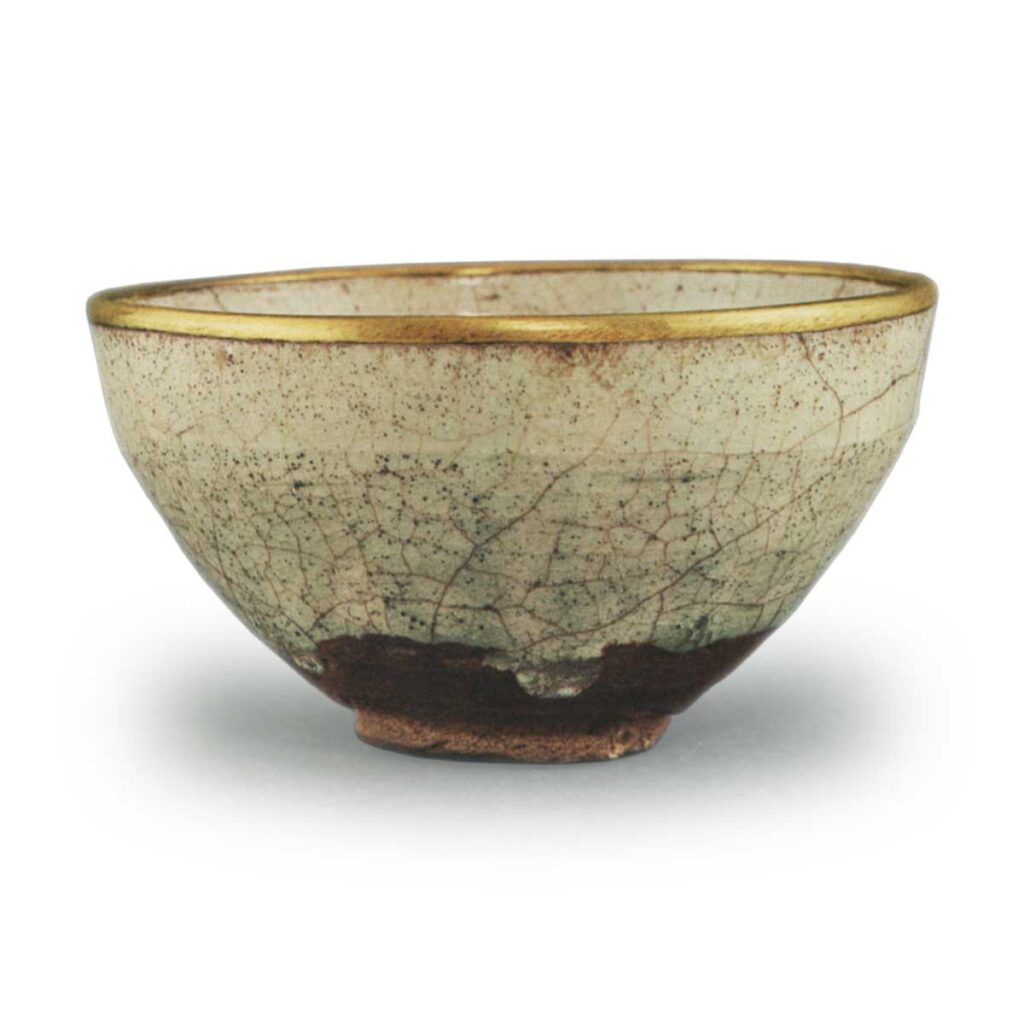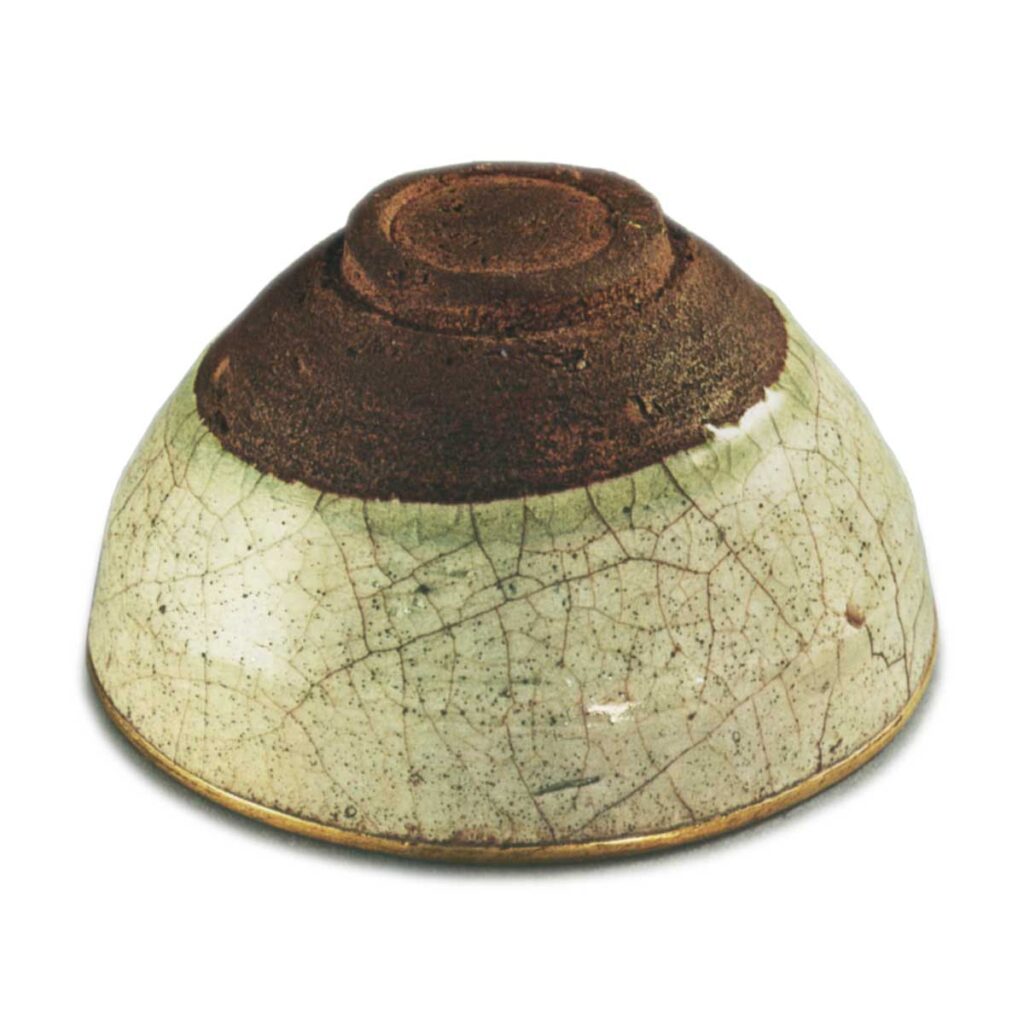

Daimyo-butsu
Important Cultural Property
Held in the collection of the Tokugawa Art Museum
Height: 6.6 – 6.8 cm
Diameter: 12.2 – 12.3 cm
Outer diameter of foot ring: 4.5 cm
Height of foot ring: 0.7 cm
A tea bowl in the shape of a bowl with a thick glaze of feldspar-based Shino is commonly referred to as a Hakutemoku. There are a few examples that have been excavated from kiln sites in Mino in recent years, and it is thought that they were made somewhat later in the period, during the Momoyama and early Edo periods, but the only examples of this type of Hakutemoku with a long history are this tea bowl, which was passed down in the Owari Tokugawa family, and two other bowls that were originally in the Kaga Maeda family. Both are designated as important cultural properties.
Hakutemoku is the oldest white pottery in Japan, and it is said that both of these bowls were owned by Takeno Jouou. Jouou died on October 29th, 1555 at the age of 54, so these bowls should be considered to be made before that time.
It is not yet clear whether this type of white tenmoku was made in Seto or Mino. Fragments of white tenmoku have been found at Asahi Kiln in Seto, and in Mino, they have been found at the sites of many kilns, including Okaya, Ohira, Takane and Kushiji, but it is not yet known where the oldest kilns for this type of white tenmoku were located. The clay seems to be similar to that used in Mino, and there is a theory that it was made at Jōrin-ji, but this is a matter for future research and discovery.
The body is made of rough white clay, and a thick transparent feldspar glaze covers the inside and outside, with the lower part of the body left unglazed.
The glaze has run down due to the pottery being well-fired, and the part of the glaze that has accumulated around the waist is a faint olive color. The inside is slightly high, and the glaze that has run down into the slightly sunken area around it has accumulated thickly, also showing a faint olive color. There are rough cracks on the inside and outside, and these have become blackish brown from the tea stains that have soaked into them, but the tea stains are more concentrated on the inside than the outside.
The shape is a teacup-shaped bowl with a wide mouth and a narrow waist, and the foot is flat, like a teapot lid. It is not as severe as the Chinese teapot lid. In particular, the mouth is not as tight as the teapot lid, and the foot, which has a shallow cut, is thick and soft, and does not have the sharpness of the teapot lid. The somewhat warm and soft feel is a characteristic that can be said to apply not only to Hakutemoku, but to Japanese pottery in general.
The rim is surrounded by a thick gold border, and the harmony with the thick white glaze is beautiful.
The firing temperature was around 1250 degrees, and the glaze melted well, making the skin look translucent, and it flowed down and accumulated in the waist and the interior. The firing was slightly reductive, and the glaze pool has a faint olive color, which at first glance looks like pale yellow Seto ware, but it is probably more appropriate to see it as well-fired Shino ware.
Three bags: white crepe, brown ground stone-paved foreign cloth, Shōō damask
Inner box: black lacquer, paper label “Hakutenku Takeno”
Outer box: Shunkei lacquerware with gold powder lettering “HAKUTENMOKU TAKENO SHOUOU SHOUZAI”
It is recorded in the inventory of the Ooshu Tokugawa family that this tea bowl was originally owned by Takeno Shouou, and then passed down to the Ooshu Tokugawa family after Takeno Shinnemon, a descendant of Shouou, presented it to the Ooshu Tokugawa family.



